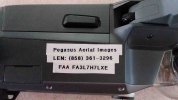Is it possible to reset the home point while in flight? RTH would be more convenient for me if I could set the home point about 20 ft off of my back deck, and about 20 feet up.
Yes. He explains how to update the Home Point starting at 8:30 in the video. You have three options. You can reset the Home Point to the drone's current location, or if your app device is GPS enabled you can reset the Home Point to the current location of your controller, or as he shows in the video you can drag the Home Point around the map to any new location of your choice.
Note: Current location is the instantaneous location right now. It is
not a dynamic location that follows the controller. For example, if you and the controller are on a moving boat and you reset the Home Point to the controller's current location, that means where you are right now. If you subsequently move your boat further, that Home Point stays where ever you last set it to. It doesn't automatically follow the movement of the boat. But you can reset to your controller's location as often as you want as you move the boat.
It's very important to always remember where the Home Point was set, especially if you're on a moving boat. The drone will only fly as far away from that Home Point until it decides it has just enough battery left to turn around and get back Home. So frequently resetting to your current controller's location is a good idea. Or, you can even drag and reset the location of the Home Point to a safer location, like the closest beach or island.
I experimented a bit with that function and discovered that you can drag and reset the Home Point to a new location even
while the drone is already actively enroute in RTH mode, as long as it hasn't already arrived overhead and started descending in auto-landing.
One thing though, you cannot reset the
height of the recorded Home Point. That zero height is registered at takeoff and all altitude measurements thereafter are referenced relative to that zero. If you land somewhere, then takeoff again, a new zero height is reset at takeoff.











